17 Bad DIY Projects to Avoid, According to Home Improvement Pros

Home maintenance is undeniably expensive. Something as seemingly simple as a minor plumbing leak or fallen gutter can set you back hundreds—if not thousands—of dollars in repairs, especially if the issue isn’t attended to in a timely manner. So it’s no surprise that many homeowners are eager to DIY their own home repairs whenever possible, not only saving them a lot of cash but giving them a sense of pride when they finish the project, too. The only problem? In many cases, handling those home repairs yourself isn’t such a smart idea—and could even be a potentially dangerous one. With the help of top home improvement professionals, we’ve rounded up the home projects you should never try to DIY.
1
Removing chipped paint

Removing a little chipped paint from your baseboards may seem like a simple enough job, but it could cause serious health issues if you’re not careful. If your home was built before 1978—even if it’s been largely remodeled—there’s a good chance there is lead-based paint lurking somewhere, which can be poisonous when ingested or inhaled.
Considering the “significant health risks associated with working with lead-based paint” and the preventative measures necessary to do this project safely, “a professional trained in lead paint management may be your best option,” says Mark Scott, president of Mark IV Builders, Inc.
2
Redoing your bathroom plumbing
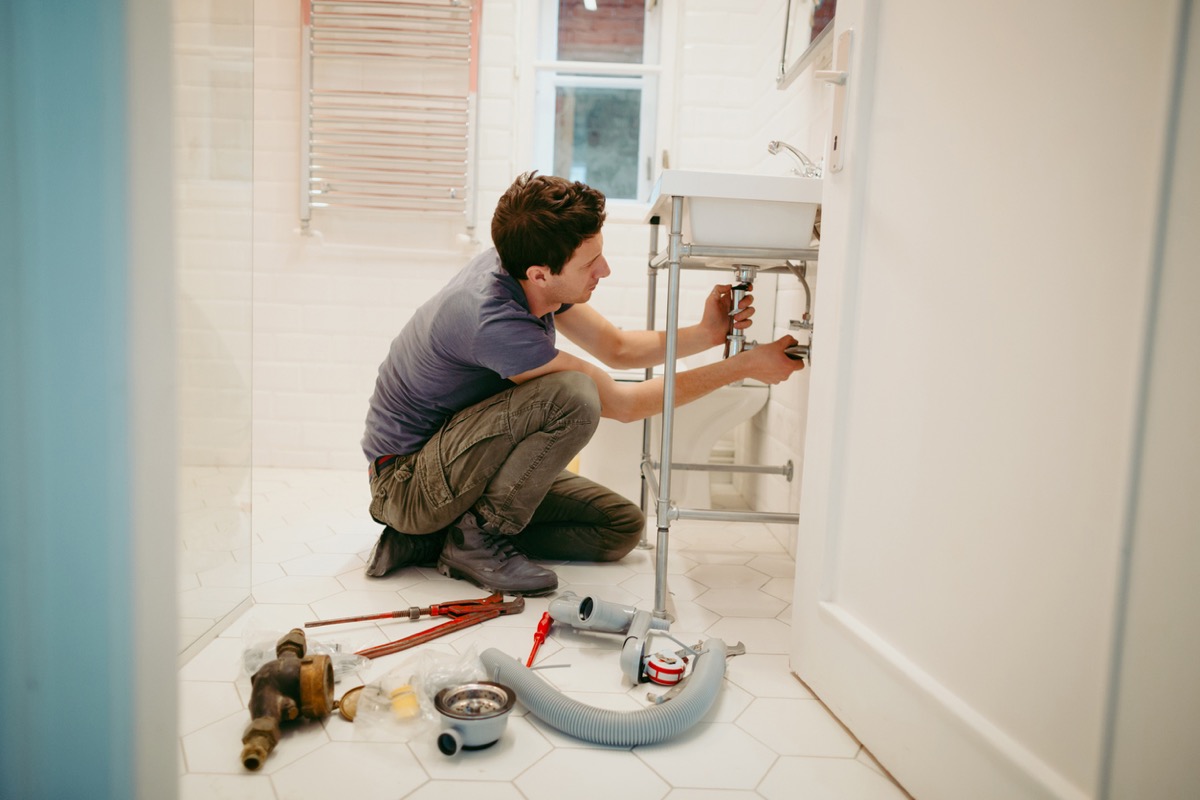
You may be able to fix a leaky sink or running toilet yourself, but don’t attempt to demolish and rebuild your bathroom plumbing without getting a professional involved. “The plumbing and electric in a bathroom remodel are so close in proximity that it’s imperative you have the right person with the expertise,” says Scott. And if you need more proof that DIY-ing this home project is a bad idea, Scott says there is potential for “disastrous” results like electrocution and flooding.
3
Fixing roof shingles

While it may seem like no big deal to tack up a few missing shingles yourself, if you do so improperly, you’re setting your home up for major interior damage. According to home inspector Andrew Walton, owner of Common Concerns Home Inspections, a bad DIY job can cause “leaks into the attic, water draining behind siding instead of into the gutter, and will void any warranty from the manufacturer.”
4
Installing a new light fixture

Online tutorials make installing new light fixtures seem easy enough, but there are enough risks involved that you’re better off calling a professional for this one, too.
“Even if you turn the switch off, there could still be live wiring in the box,” putting you at risk for electrocution, says Sean Dore, owner of Mr. Electric of Lafayette and Mr. Electric of East Baton Rouge, two Neighborly companies in Louisiana.
5
Replacing your electrical panel

While having the appropriate electrical panel to cover your home’s energy needs may reduce your risk of a house fire, installing a new panel yourself is never a good idea. Dore notes there are risks of electrocution, code non-compliance, and safety concerns—like electrical fires—that come with bad DIY wiring jobs. You’re better off leaving this complicated task to licensed professionals.
6
Demolition of electrical components
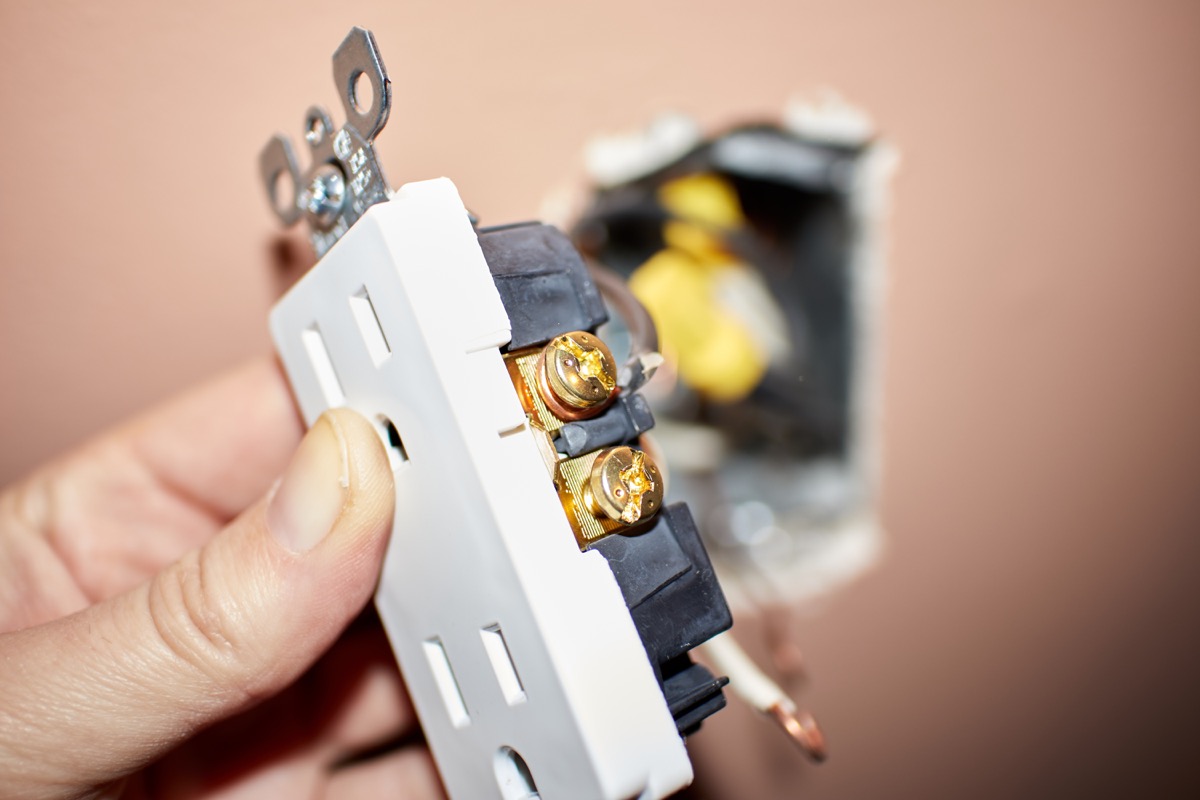
Even if you feel like you can safely remove an outlet or junction box yourself, hiring a licensed electrician will serve you better in the long run. In addition to requiring specific, location-based permits, “a licensed professional will help you determine what can and can’t be done before you start ripping things out,” says John Judd, Jr., co-owner of Judd Builders in Asheville, North Carolina.
7
Repairing drywall
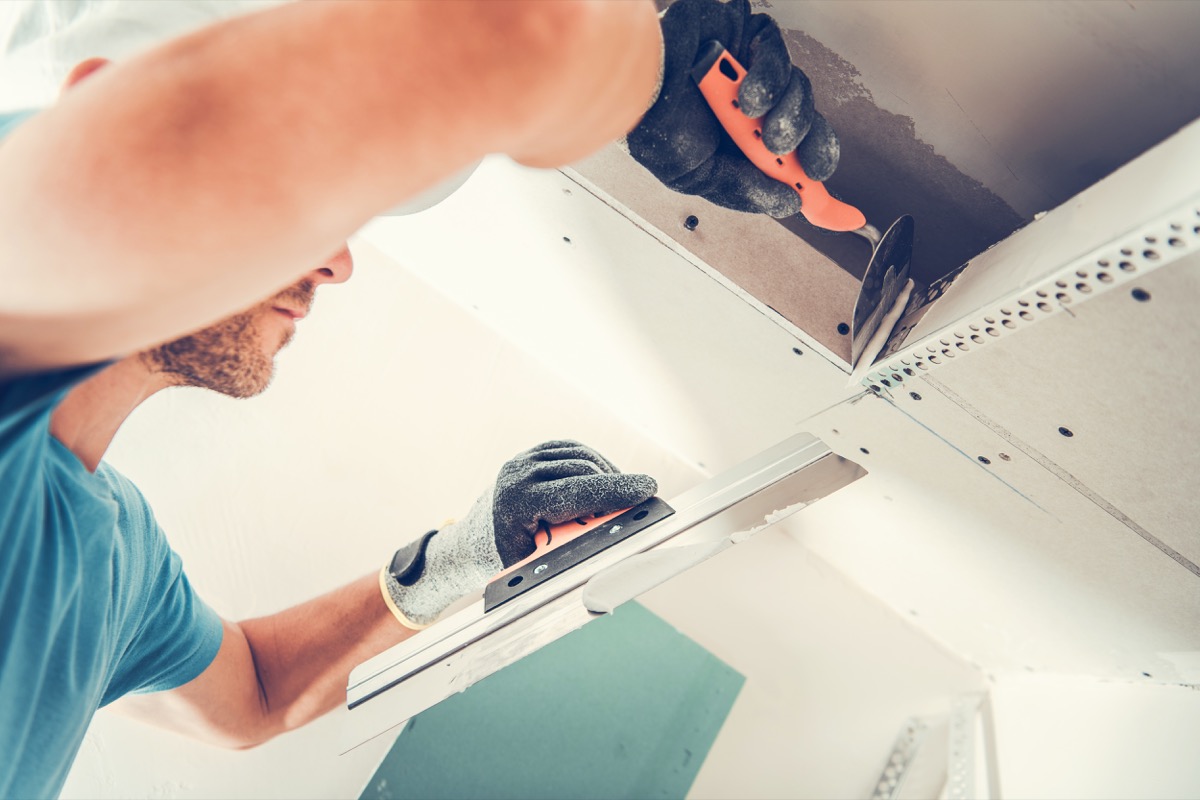
Think you’ve got what it takes to drywall a room because you’ve got the time and tools necessary for the job? Think again. “Hanging drywall and skim coating takes skill and is messy,” says Judd. He warns that DIY jobs often lack the polish of work done by a professional.
8
Finishing unfinished rooms

That unfinished attic may seem like a prime spot to add some framing and drywall, but similarly, if you’re not using a professional to handle the job, you could find yourself in serious trouble.
“If you don’t have architectural drawings with loads calculated by an engineer and a contractor with lots of experience, it’s a recipe for disaster,” says Ryan Masker, owner of Tandem Contracting. Doing so may even add too much weight to your home and potentially cause structural issues over time.
9
Drilling into walls
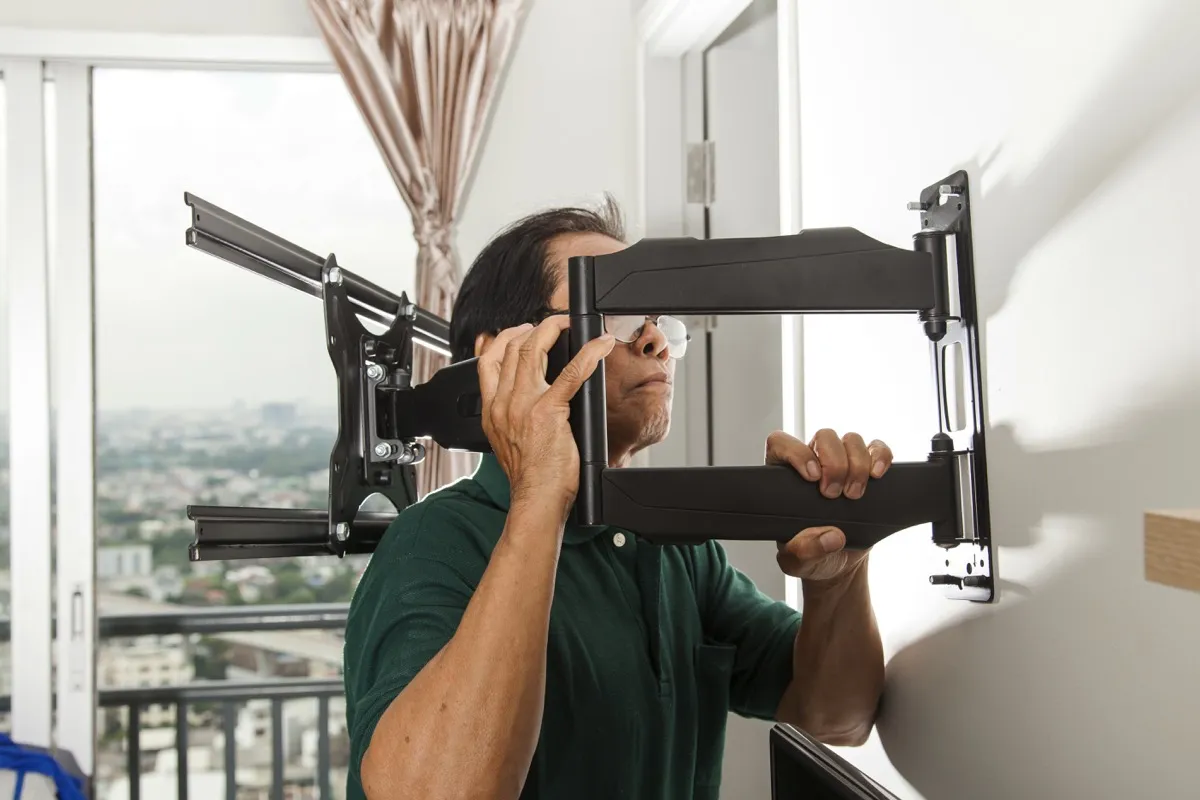
Hanging a TV stand seems simple enough—until you find yourself saddled with a much bigger repair, that is. When drilling for installation, “you may not know that wires and pipes run on the back of your wall,” says Harry H. Knowles, a home safety expert at home repair company Fantastic Services. He says amateurs can electrocute themselves, burst a pipe, or even cause a gas leak if they’re not careful.
10
Replacing windows

It may seem like a straightforward job, but making an error while replacing your windows could lead to major expenses down the line. “An amateur window installation may increase your energy bills,” says Knowles.
Another concern with a DIY job? Even the smallest gap between the window, framing, and walls can set you up for water leaks and mold damage.
11
Adding a skylight

Installing a skylight can instantly brighten any room—or ruin it, if you’re not careful. “If it is not installed perfectly, it will ultimately leak and cause extensive problems,” says Richard James D’Angelo, project manager at JWE Remodeling and Roofing in Hanover, Pennsylvania. What kind of problems, you ask? Potential flooding, rot, and mold issues, he cautions.
And even if you’re having a pro tackle this project, make sure you’re careful—D’Angelo recommends ensuring there’s a warranty on both the skylight itself and the contractor’s labor.
12
Replacing an electric stove with a gas one

Eager to ditch that old-fashioned electric stove for a gas range? Account for a contractor fee as well as the appliance itself. “Gas is both poisonous and flammable,” cautions Knowles, who says that a large percentage of gas accidents occur because of improper assembly, connection, or installation issues with stoves.
13
Removing insulation
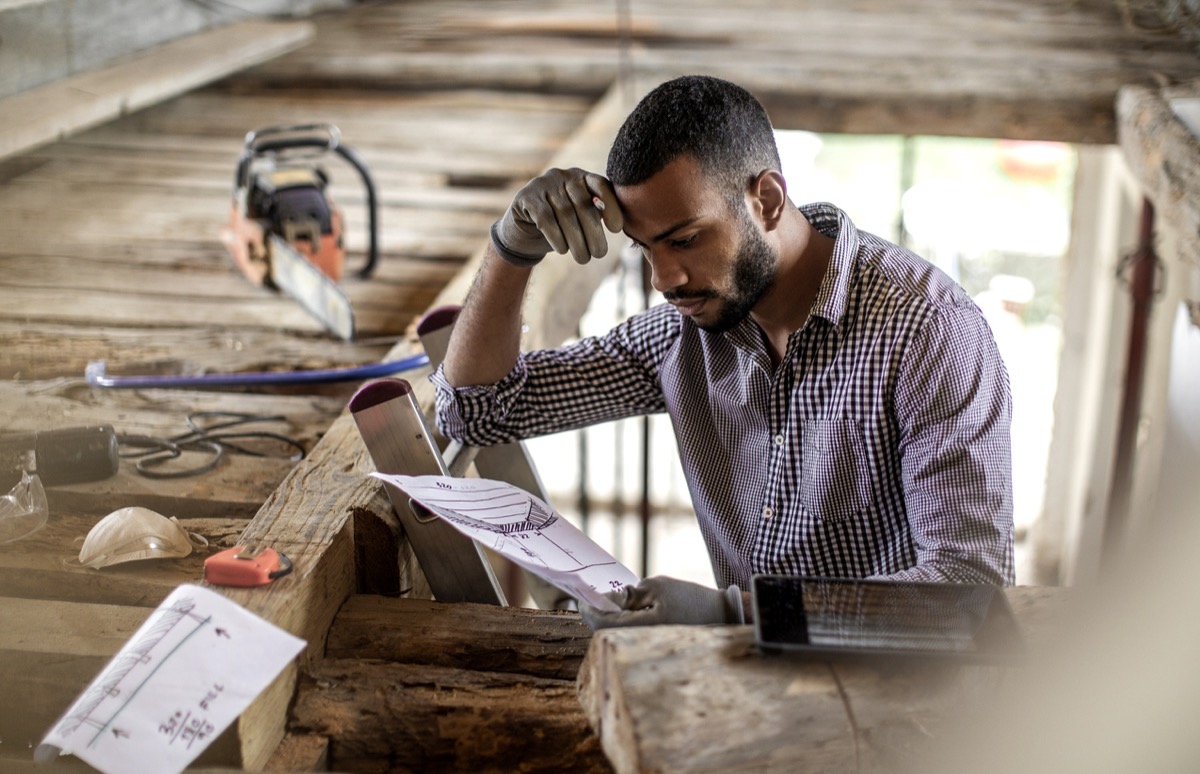
Want to keep your home warmer in the winter and cooler in the summer? Call in an expert before you start removing your existing insulation. Many older homes have asbestos in their insulation, which is carcinogenic. Knowles recommends “planning an in-depth inspection of the materials” by professionals instead of saddling yourself with a bad DIY job.
14
Expanding your basement
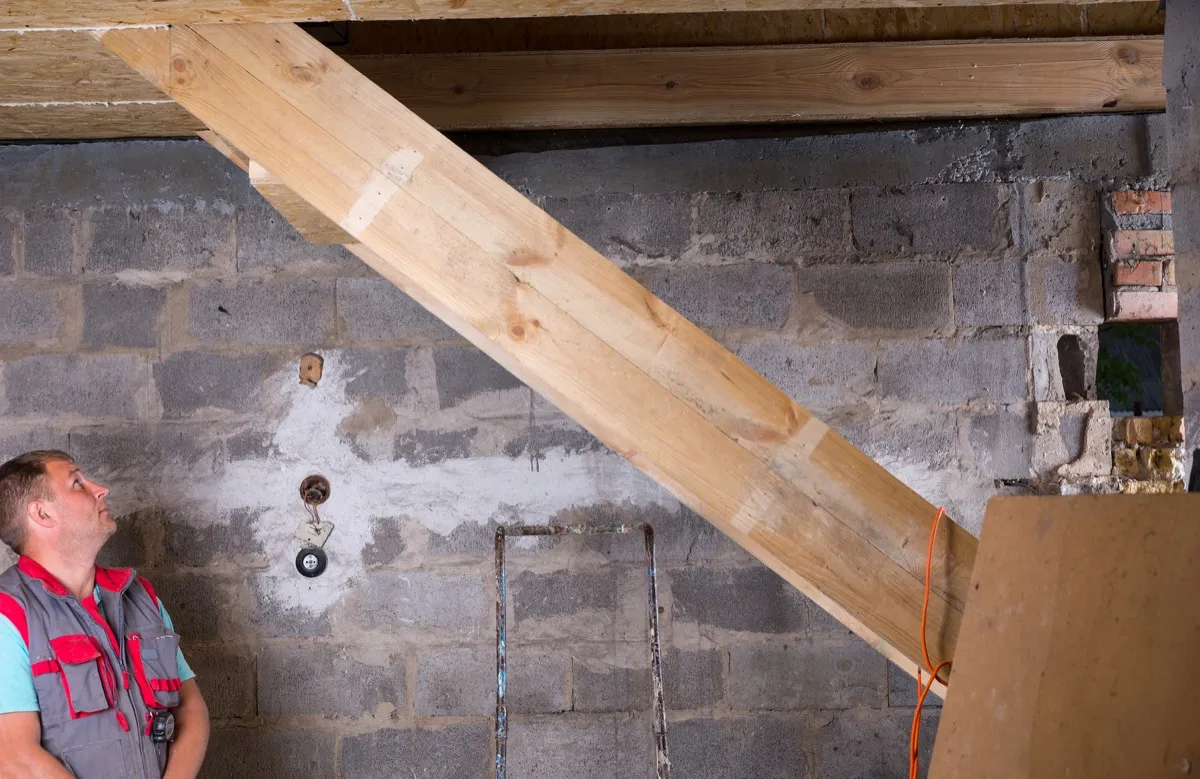
Even if you consider yourself relatively handy or have some construction experience, you’re better off leaving the execution of that spacious basement makeover to the pros. However, you need a contractor to do more than just ensure that everything’s up to code. “It’s important that basement expansions are executed extremely carefully to prevent water from snow and heavy rains from flooding the space,” explains Scott.
15
Repairing your HVAC unit

Just because you’re equipped to install a window air conditioner doesn’t mean you’ve got the necessary skills to give your central HVAC system an overhaul. Since your HVAC system uses chemical refrigerants, “the smallest error can release toxic pollutants into the air of your home or office,” explains Knowles, who notes that electrical shocks are another major concern with DIY HVAC jobs.
16
Removing an evaporative cooler
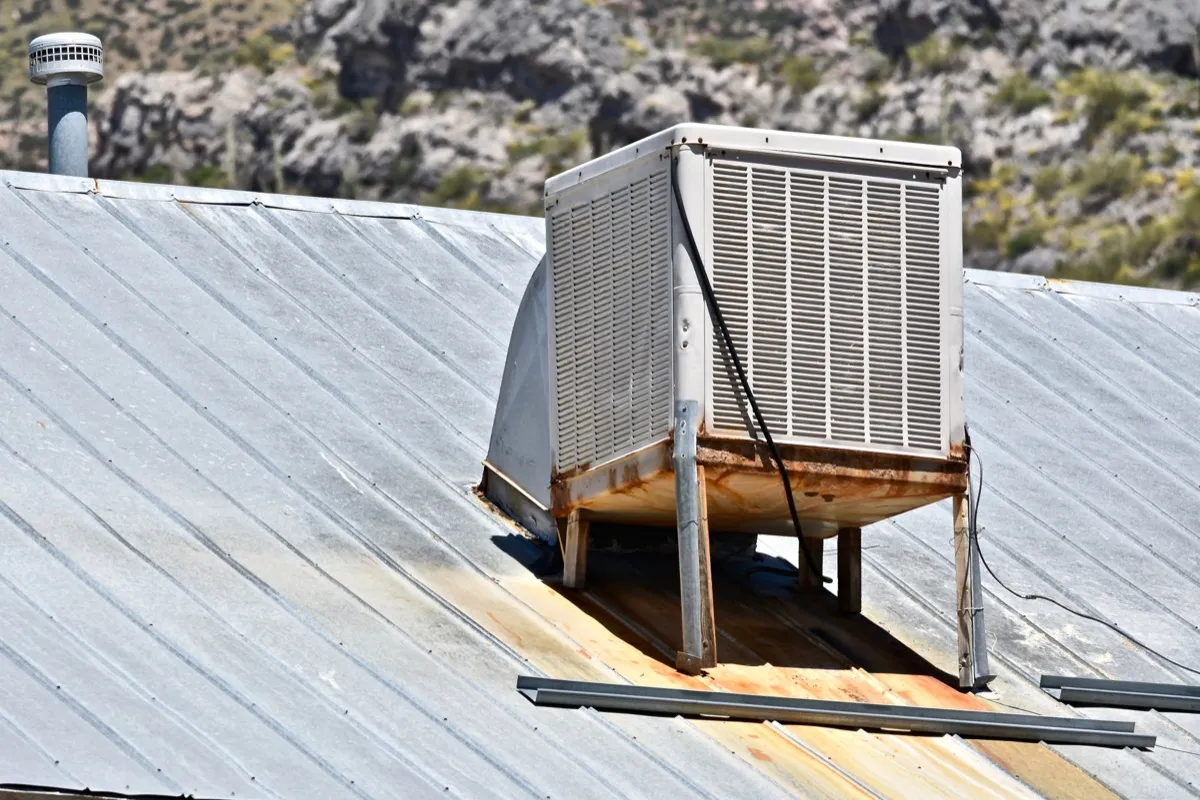
Taking that old evaporative cooler off your roof requires a whole lot more than just a ladder and some elbow grease. In addition to the danger of falling off the roof while trying to remove the cooler, “getting them lowered or dropped from the roof can also add extra danger for anyone on the ground,” says Mason Stout, a roofing contractor at Pioneer Roofing in Utah. He recommends hiring a roofer or HVAC tech to handle the job instead.
17
Installing a mini-split system

A mini-split system can keep ductless homes warmer in the winter and cooler in the summer without a major renovation, but that doesn’t mean they’re a project DIYers should tackle. “Not only can a poor installation lead to poor performance and premature failure, but you’ll also risk your manufacturer warranty should any issues arise,” says Matt Daigle, CEO and founder of sustainable home improvement company Rise.